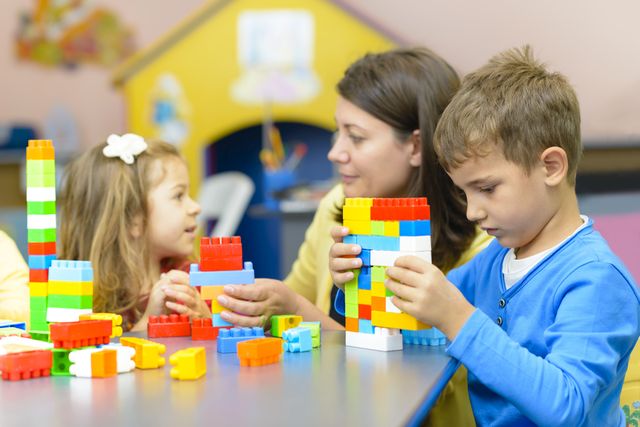CSUN Professors on Gift Giving for Kids: Going Back to the Basics

Children playing with legos. Image provided by Robin Sachs.
In an era where there seem to be endless options when shopping for kids’ toys, California State University, Northridge experts in child development and the dynamics of play are offering advice on holiday shopping this season.
Kandice Grote, an associate professor of child and adolescent development, and Robin Sachs, a lecturer of in the Department of Recreation and Tourism Management, shared important insights about childhood development and toys.
“Every year, every holiday season, there’s this really big push for a bunch of toys that are new or the latest and greatest, but you know, a lot of those are just marketed in a way to sell them, not to really benefit your child,” said Grote, who, along with Sachs, teaches in CSUN’s College of Health and Human Development. “Just because something is visually engaging, doesn’t mean it is mentally, physically or socially engaging a kid.”
There are three key aspects of developmental growth that can be fulfilled via play, both professors said, pointing to a number of “multi-dimensional toys”— including Legos, Play-Doh, dolls, stuffed animals, balls and outdoor activities, art sets, magnet sets and even Rubik’s Cubes—that promote skill building in regards to physical, cognitive and psychosocial growth for a child.
“There are often differences between what a child wants and what a child needs,” said Grote, referring to the importance of toys that address basic skills.
She said when a toy engages a child and simultaneously addresses developmental needs, it will improve their play experience.
“It’s the overall development, physical, cognitive and psychosocial that makes for a child’s development and play lends itself to that,” said Sachs. “I firmly believe if a child is not allowed to play, or is not given the right opportunity, it makes a huge difference in their overall development.”
However, not all toys benefit child development.
“I think if it’s advertised in such a way that it’s ‘the newest thing’ and it’s ‘the greatest latest thing,’ the reality is most children don’t need it,” said Grote. “Most children need some of the basic things and they need opportunities to develop their own version of play.”
Selecting a toy that will interest a child, spark creativity and imagination, but also encourage them to develop their key skills can feel overwhelming, Grote and Sachs said.
“Each child has their own way of playing and each person has their own way of playing,” said Sachs, promoting unconventional toys such as handmade toys, gardening kits and other imaginative activities.
“When thinking about what would be a perfect gift to give the child, listen to what that child is interested in, because they’ve given you some helpful hints,” she continued. “Really pay attention to what the child is saying, it could be some activity that they’re doing in school or something they’re helping adults with. Things like that will really make a difference.”
Additionally, when making toy selections both experts stressed the importance of doing informed research.
“It’s important for parents – or anyone that’s interested in purchasing something for a child – to do their homework and be a critical consumer,” said Grote. “Things are marketed in such a way that they just want to sell a product, so something may be labeled as educational, but it’s really not educational. I encourage people to do their due diligence, to ask others and really look at toys to see if they are really going to spark some element of development in a child.”

 experience
experience